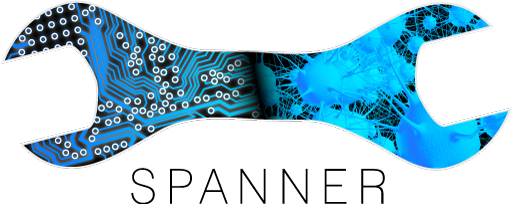
Self-repairing Hardware Paradigms based on Astrocyte-neuron Models (SPANNER)
Members: Dr David Halliday, Prof Andy M. Tyrrell, Prof Jon Timmis
Funded by: EPSRC grant EP/N007050/1
Duration: 1st October 2015 - 31st March 2019
The human brain is remarkable in its ability to self-repair, for example following stroke or injury. Such self-repair results from a range of distributed and fine-grained mechanisms which act in tandem to ensure that the neurones (the basic building blocks in the brain) continue to function in as close to a normal state as possible.
In contrast modern electronic systems design typically relies on a single controller or processor, which has very limited self-repair capabilities. There is a pressing need to progress beyond current approaches and look for inspiration from biology to inform electronic systems design.
Recent studies have highlighted that interactions between astrocytes (a type of glial cell) and neurones in the brain provide a distributed cellular level repair capability where faults that impede or stop neuronal firing can be repaired by a re-adjustment of the local weights of connections between neurones in the brain.
This project aims to exploit these recent findings and develop a new generation of self-repairing algorithms by taking inspiration from these results to design a new generation of "astro-centric" algorithms. To achieve this we will include components representing both neurones and astrocytes in our electronic systems and model the interactions between these in such a way as to capture the distributed repair capabilities seen in the biological system.